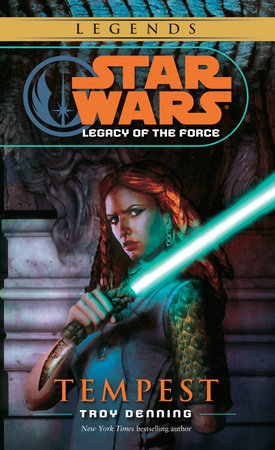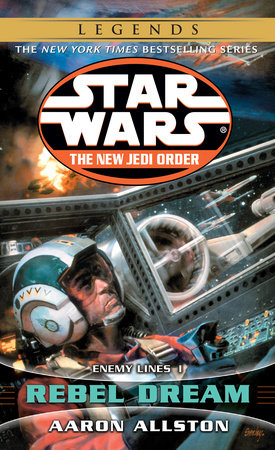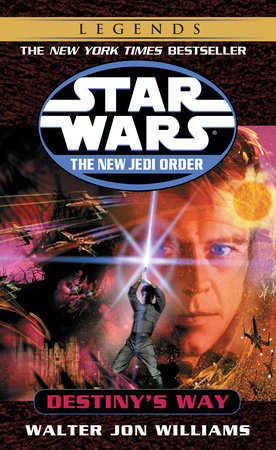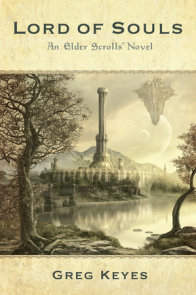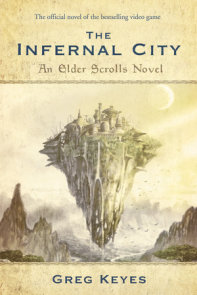Author Q&A
Inteview with Greg Keyes
Q: EDGE OF VICTORY is the first book in the next series of New Jedi Order novels. How many sequels will follow EDGE OF VICTORY, and will you be writing any of them?
Greg Keyes: EDGE OF VICTORY is actually a ?basket? title?the two books which make up EDGE OF VICTORY are CONQUEST and REBIRTH. I?m writing both of them.
Q: Tell us about EDGE OF VICTORY. Where does the action take place? Who are the heroes and villains this time? How are things looking for the New Republic as the book opens?
GK: Conquest opens a few months after the end of BALANCE POINT, and things are not going well for the Jedi. At the end of BALANCE POINT, the Yuuzhan Vong Warmaster, Tsavong Lah, promised that he would conquer no more New Republic planets if all of the Jedi?and especially Jacen Solo?were turned over to him. CONQUEST begins with some of the results of that call for Jedi heads. Jedi are being hunted and killed all over the galaxy. Naturally the students and teachers on Yavin 4 are in danger. Luke contacts Talon Karrde to evacuate them, but Anakin Solo, concerned for his friend Tahiri, won?t wait for Karrde and flies there on his own.
CONQUEST is basically an Anakin adventure. Other prominent characters appear, but Anakin is the star here. In CONQUEST, we see a lot of two Yuuzhan Vong castes we haven?t seen before — the Shapers, who manipulate Yuuzhan Vong biotech, and the Shamed Ones. The Shamed Ones are those whose bodies won?t except bio-implants or who don?t take scarification and tattooing very well. This is taken as a sign that the gods don?t like them very much, and they are treated accordingly.
Q: The bond between Anakin and his friend Tahiri Veila reminded me in some ways of the closeness Jaina and Jacen share. Like them, Anakin and Tahiri are able to use the Force as almost a single being, becoming capable of feats together that neither one could perform alone. It makes sense that twins like Jaina and Jacen can link up in the Force, but Anakin and Tahiri aren?t related. How do they do it?
GK: They?re very close, and their personalities are complimentary, but ultimately there is a mystical connection. Ikrit, a Jedi master, prophecized that they would be far stronger together than the sum of their parts.
Q: Would I be wrong to see romance in Anakin and Tahiri?s future?
GK: Hmm. Tahiri is fourteen when CONQUEST opens, and Anakin sixteen, and they?ve been friends since they were respectively nine and eleven. This is the time in their lives when Anakin is noticing, ?hey, Tahiri is a girl?, and they?re trying to make the transition from childhood best friends to?well, to whatever comes after that. Saying any more would be telling.
Q: As the New Jedi Order continues, some fans are growing impatient to see Luke Skywalker take a more active role. In EDGE OF VICTORY, he?s struggling to hold the Jedi together as they are threatened from without by the Yuuzhan Vong and the cowardly Peace Brigade, and from within by Jedi Knights like Kyp Durron and others who want to lash out aggressively at every foe, even if it means flirting with the dark side. How much longer can Luke continue to walk this tightrope?
GK: Well, I think that?s one of the central questions of the series. Add to that, what does Luke do now that his Knights are being hunted all over the galaxy? Luke has to make some choices, and he has to make them soon.
Q: EDGE OF VICTORY delves deeper than any novel yet into the alien religion and psychology of the Yuuzhan Vong. Anakin actually teams up, in a manner of speaking, with a renegade Yuuzhan Vong, Vua Rapuung. And we come to learn a lot about the powerful and mysterious Vong caste known as shapers. How much creative freedom did you have to explore these areas? Were you told exactly what you could and couldn?t reveal, or were you able to do a little world-building of your own?
GK: Writing the Shapers and Rapuung were both great fun, and I was able to exercise a lot of creativity in doing so. When you work within the Star Wars universe, there are always boundaries?not the least of which is what has been written by previous authors?but once you understand the boundaries, it?s possible to do quite a bit of exploring on your own.
Q: The big mystery, of course, is why the Yuuzhan Vong don?t show up in the Force like all other living things. I know you can?t reveal the solution to this mystery, but I wonder if you know it? I mean, is there a solution at all?
GK: Yep and yep.
Q: You?ve written a number of well-received Babylon 5 novels. How would you compare the universe according to J. Michael Stryzinksi with the universe according to George Lucas?
GK: They were very different experiences in a many ways. STAR WARS has a lot more history to account for. I am a big Babylon 5 fan, or I wouldn?t have done the books. However, A New Hope hit the screen when I was sixteen or so, and it was the movie I had been waiting sixteen years for someone to make. Now a whole generation has grown up who never knew the world without STAR WARS, and the breadth of Lucas? original vision has grown exponentially in the novels. To write a part of this enormous whole without betraying it is a very daunting challenge. It?s enjoyable but it makes me nervous. I had a similar but much milder reaction to Babylon 5 because it was easier to come to grips with the already existing material.
Q: You?re also the author of the fantasies THE WATERBORN and THE BLACKGOD, and the alternate history series The Age of Unreason, which featured Benjamin Franklin and a host of famous personages from the 18th century in a world where the scientific method detours into magic. Are there any common threads that run through your books?
GK: Probably. Someone recently pointed out that I often have female characters who are intellectually repressed by their societies and often end up with artificial hands. I?d really hate for a Freudian to get hold of that. The nature of the hero is something I?ve explored in several permutations, and I do this again with Anakin. Conquest and the Age of Unreason have in common a meditation on what science is and isn?t. I tend to seek understanding of villains? motives without trying to make them likable.
Ultimately, however, my focus is on characters and storytelling rather than theme or subtext.
Q: What are some of the things that led to your becoming a science fiction and fantasy writer?
GK: I?m sure reading in the genre from the day I knew how to read on has a lot to do with it. I wanted to provoke and entertain in the same way my literary heroes did. I could give a more complex answer, but it wouldn?t be any more true.
Q: You?ve studied mythology extensively. What insights into STAR WARS did your studies give you?
GK: STAR WARS is certainly mythic in scope, and was conceived of that way from the very beginning. Embedded in the STAR WARS universe are themes and archetypes that existed at least as early as Babylon and probably for hundreds of thousands of years earlier.
Specifically, in CONQUEST, I had a chance to flesh out some of the beliefs of the Yuuzhan Vong — their pantheon, their ?science? their relationship to the universe. All of these things are reflexes of belief systems, and its the construction, reconstruction , and deconstruction of belief systems that preoccupies me as an anthropologist. I didn?t borrow any existing system of belief for the Yuuzhan Vong, but used general principals to build upon the legacy of my predecessors in the New Jedi Order.
Q: What are you working on now?
GK: Right now, that would be EDGE OF VICTORY II, REBIRTH. While CONQUEST is really a Solo adventure (pun intended) Rebirth moves back to a larger, more ensemble cast.
After that, I?ll finish the first book of a four part fantasy, also for Del Rey. I don?t have a series title yet, but book one is entitled THE BRIAR KING. It?s my first return to the heroic fantasy novel since THE BLACKGOD. It?s got a large cast of characters, and the world is totally new for me. Great fun to write. I?ve also been writing a series of short stories for Dragon magazine set in the same world as my first novel THE WATERBORN, but featuring a character who doesn?t show up in the books.








